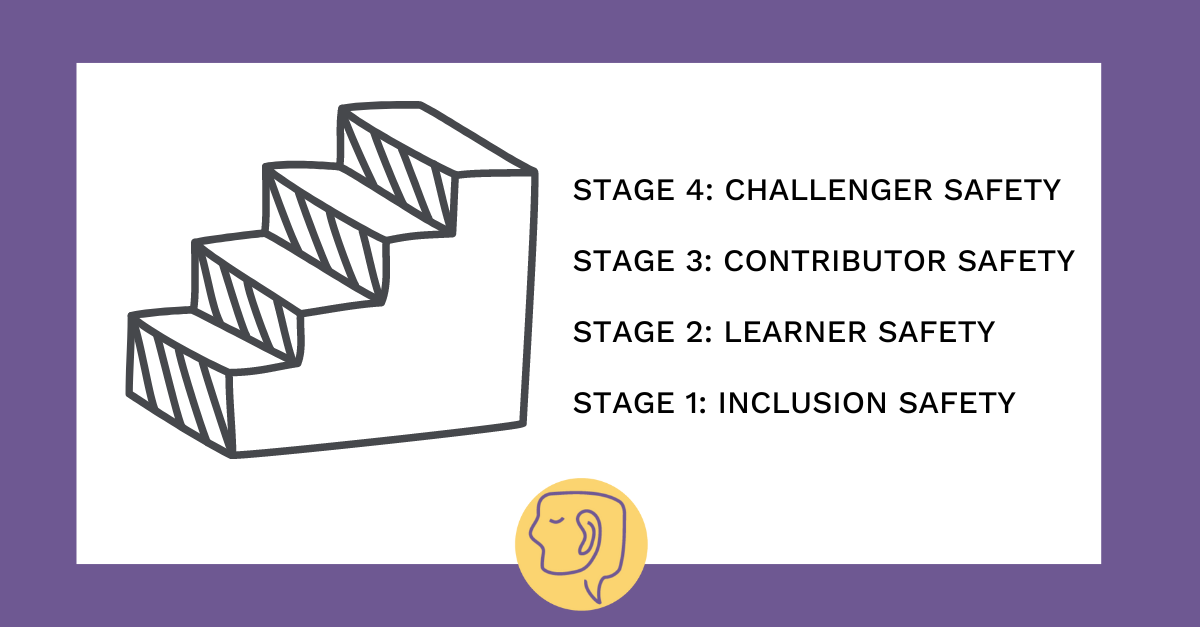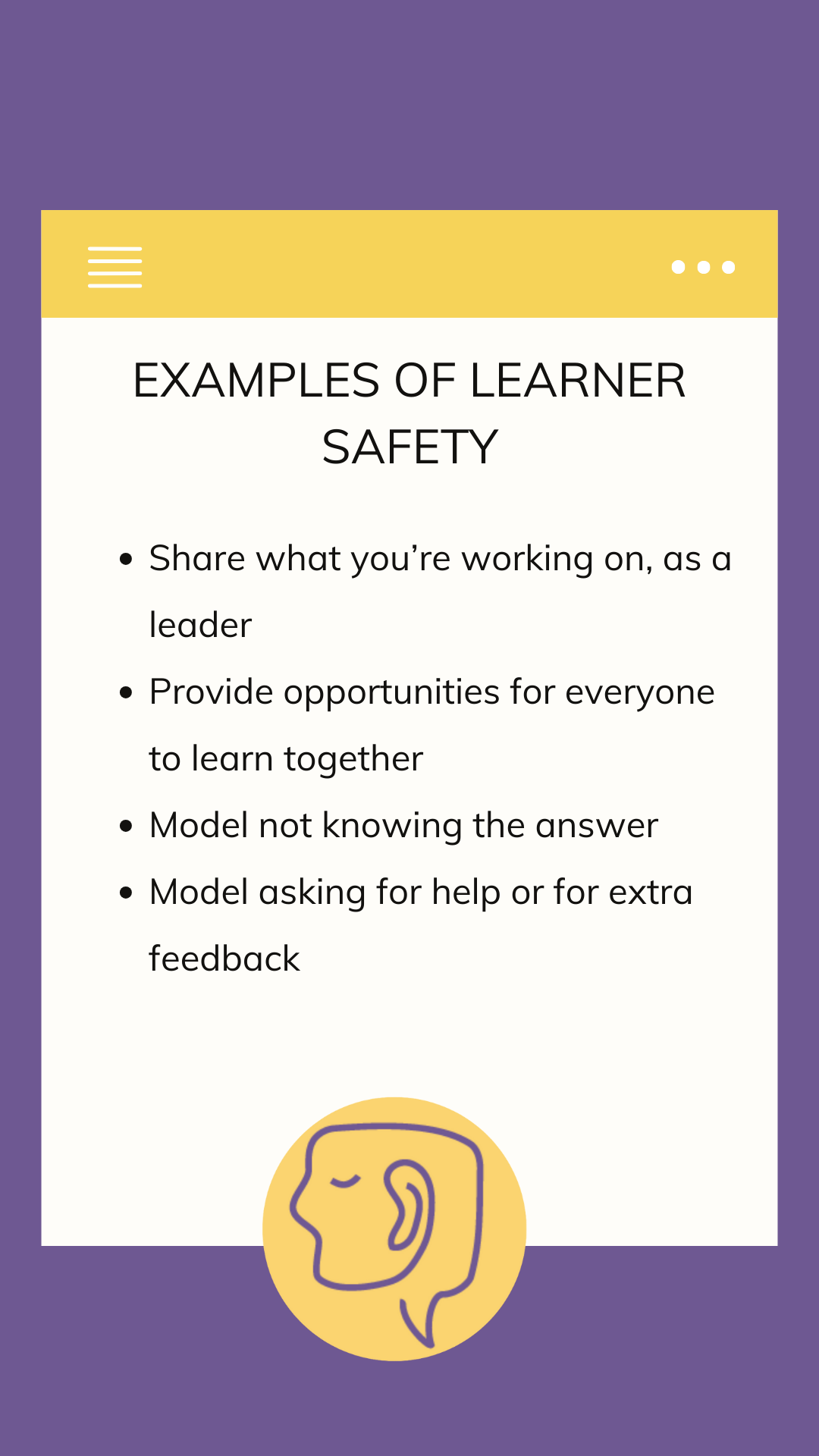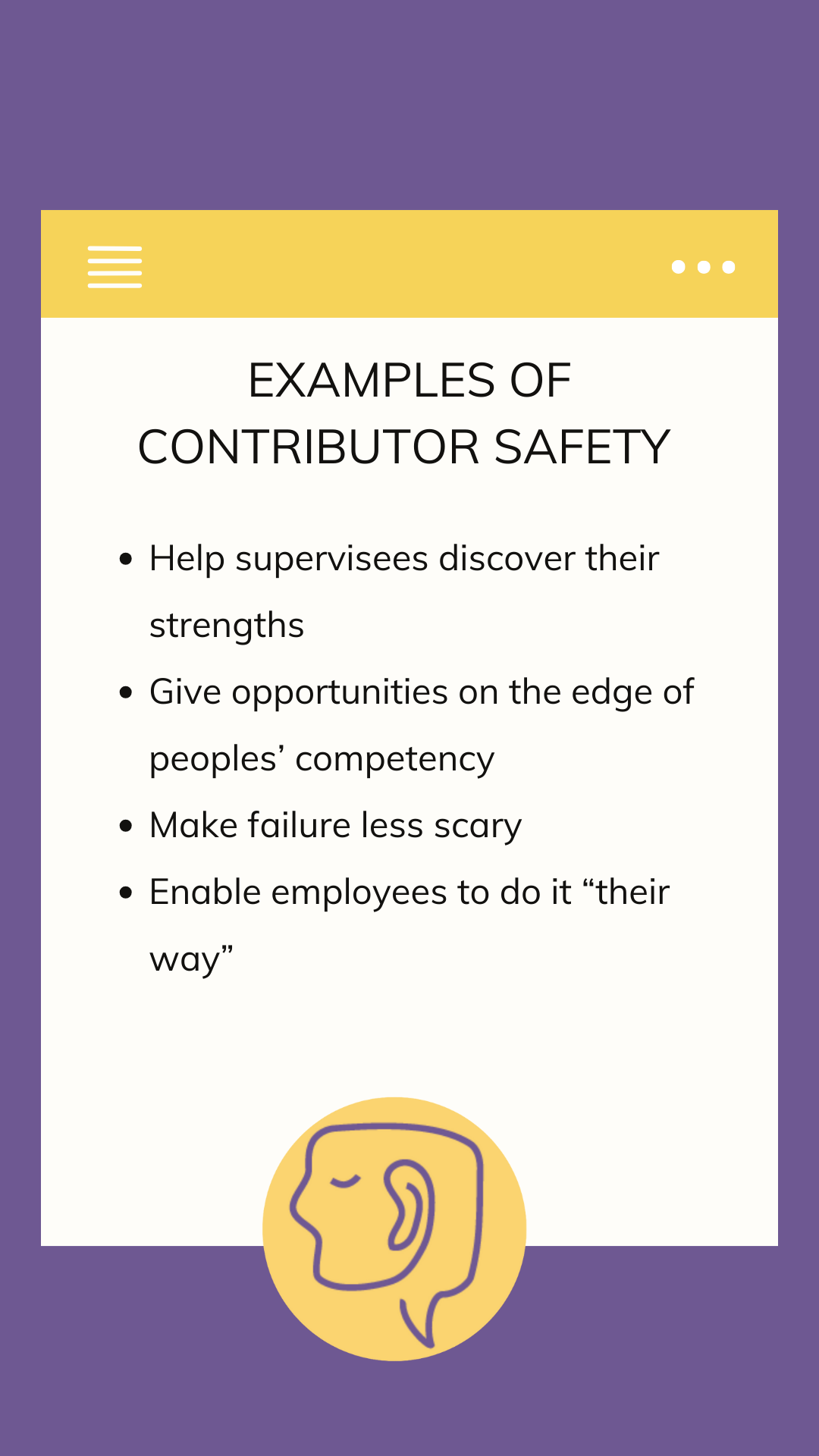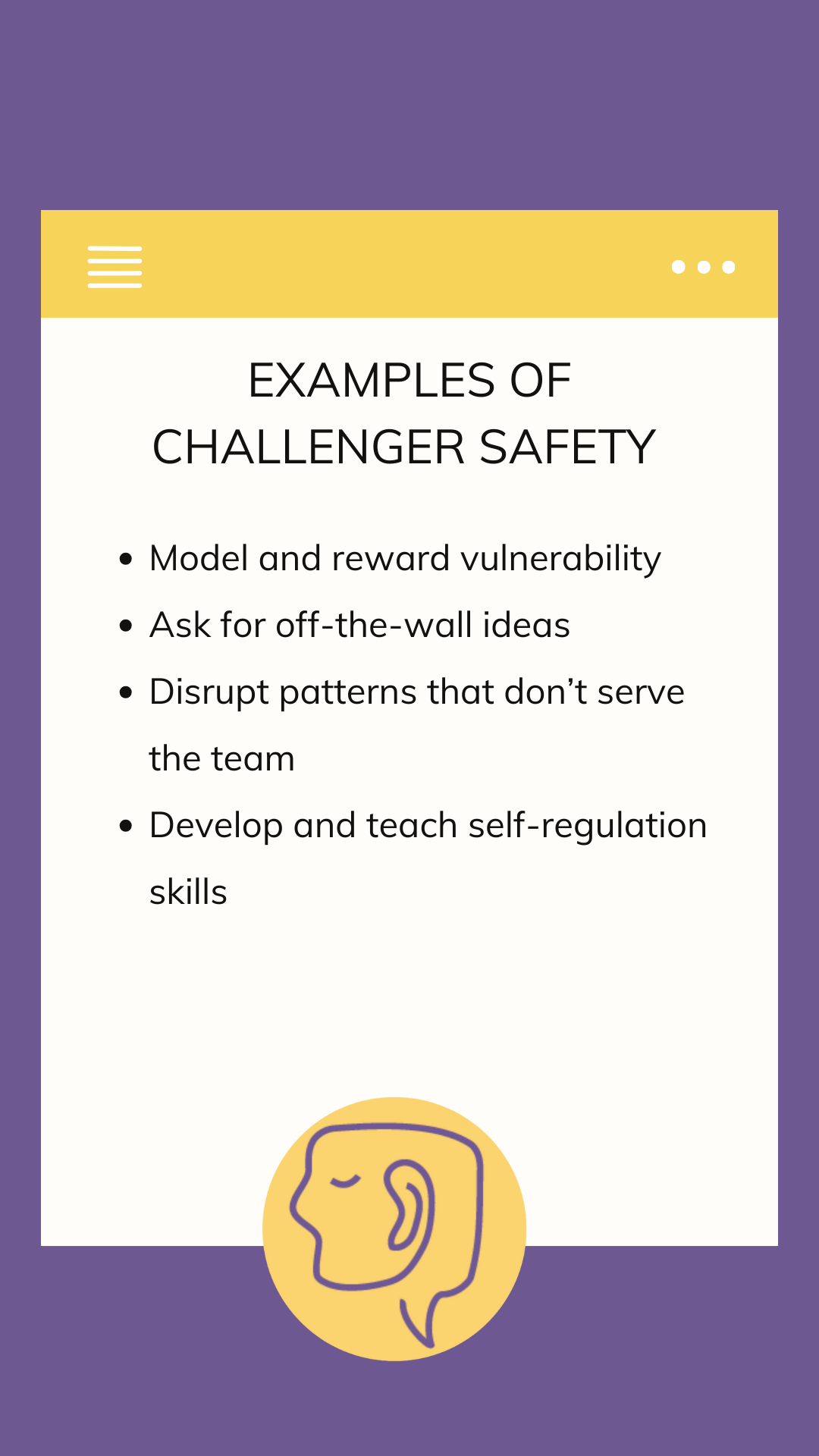Apr 12
/
Kristyn Peterson
4 Stages of Psychological Safety
THE STAGES
Psychological safety can feel really abstract and hard for us to "get our arms around". That's why I love the concept of 4 Stages of Psychological Safety, developed by Timothy Clark.

ABOUT THE 4 STAGES
The 4 Stages of Psychological Safety are linear. That means you have to establish the lower levels before you can reach the higher ones. That sounds really nice and clear-cut, but we also may have "splintered skills" across the stages.
Psychological safety is part of a company culture (aka the group level), but we do need to consider it at the individual level. When new people join our teams, they are coming to us with previous learning history and experiences that may differ from the rest of the team is. Our employee on-boarding experience should ensure that this sort of process is considered, planned and designed for.
We like to think about it as building the foundation of a house, and that starts with inclusion.
Psychological safety is part of a company culture (aka the group level), but we do need to consider it at the individual level. When new people join our teams, they are coming to us with previous learning history and experiences that may differ from the rest of the team is. Our employee on-boarding experience should ensure that this sort of process is considered, planned and designed for.
We like to think about it as building the foundation of a house, and that starts with inclusion.
INCLUSION SAFETY

ALL PEOPLE ARE WELCOME HERE.
Inclusion safety means that anyone is able to be in the space without fear of harassment, exclusion, or hostility. No matter their gender, ethnicity, color, country of origin, ability level, sexuality, parental or veteran status, or any other feature about a person.
This goes above and beyond the legal definition of "protected classes". It truly means that anyone could share the space without fear.
This goes above and beyond the legal definition of "protected classes". It truly means that anyone could share the space without fear.
QUESTIONS TO ASK
Does our team match the demographics or our field, and of our customers?
Are we living up to our diversity statement? if no, what changes do we need to make?
what can we do to improve our employee experience during the first 30 days of employment?
Empty space, drag to resize
LEARNER SAFETY
SAFE TO LEARN - AND FAIL.
Psychological safety is particularly important in what gets referred to as "knowledge work", or, work that requires specialized skills and competency to perform. In order for people to perform knowledge work, they have to learn the skills, concepts, methodologies, and frameworks needed.
That's a combination of hard skills - but also soft skills - like problem solving, making decisions with lots of complex variables involved. How do teach, and help people learn, these more complex and hard to define skills? During this phase, we should focus initially on imitating but, as quickly as possible, start moving toward learning these more complex skills to be effective as a contributor.
That's a combination of hard skills - but also soft skills - like problem solving, making decisions with lots of complex variables involved. How do teach, and help people learn, these more complex and hard to define skills? During this phase, we should focus initially on imitating but, as quickly as possible, start moving toward learning these more complex skills to be effective as a contributor.
QUESTIONS TO ASK
are failures framed as successful learning opportunities?
How are we assessing what people do, and do not, know?
How can we balance decreased fear or failure and high performance standards?

Empty space, drag to resize
CONTRIBUTOR SAFETY

WE TRUST YOU.
Now that you've established learner safety, you can feel confident in your ability to add to the mission and vision of the organization. You feel trusted to do the work you need to do.
Micro-managing is the enemy of contributor safety. Autonomy and empowerment reign supreme in this phase. While we may not see a ton of self-advocating at this phase, we can start nurturing those seeds now. Because people are operating more independently, it's integral we maintain the attitudes regarding failure we established in the learner phase so we can keep moving forward under conditions of volatility, uncertainty, complexity and ambiguity.
Micro-managing is the enemy of contributor safety. Autonomy and empowerment reign supreme in this phase. While we may not see a ton of self-advocating at this phase, we can start nurturing those seeds now. Because people are operating more independently, it's integral we maintain the attitudes regarding failure we established in the learner phase so we can keep moving forward under conditions of volatility, uncertainty, complexity and ambiguity.
QUESTIONS TO ASK
DO PEOPLE HAVE A PATH TO GET HELP WHEN THEY'RE WORKING AUTONOMOUSLY?
Am I empowering people to make decisions on their own, appropriate to their knowledge?
how do I react in the face of someone else's failure?
Empty space, drag to resize
CHALLENGER SAFETY
WE WANT TO HEAR FROM YOU.
Challenger safety is the fourth and most advanced stage of psychological safety. To reach this stage, people need to feel included, like they can safely learn (and fail), as well as contribute to the mission and vision of the organization.
In this fourth stage, we start to see the best work. This great work comes from people being able to be vulnerable - both in good ways and bad. They can share frustrations and ideas for how to improve. They can challenge the status quo without fear of repercussions, and trust their team to be innovative and creative.
In this fourth stage, we start to see the best work. This great work comes from people being able to be vulnerable - both in good ways and bad. They can share frustrations and ideas for how to improve. They can challenge the status quo without fear of repercussions, and trust their team to be innovative and creative.
QUESTIONS TO ASK
DO WE HAVE SYSTEMS IN PLACE TO PROTECT PEOPLE FROM RETALIATION?
DO WE TREAT OUR CRITICAL FRIENDS WITH THE RESPECT AND CARE THAT THEY TREAT OUR MISSION?
HOW DO WE RESPOND WHEN WE CAN'T IMPLEMENT CONSTRUCTIVE FEEDBACK?

WHAT TO DO NEXT?
Even if there are four phases, it's important to remember that psychological safety is a journey and not an end state. As our teams continue to grow, and the marketplace we operate in continues to change, we must accept psychological safety will ebb and flow as well.
Having an attitude of continuous improvement will enable our teams to be their absolute best.
Having an attitude of continuous improvement will enable our teams to be their absolute best.
Empty space, drag to resize
Pages
Policy Pages
Copyright © 2024
